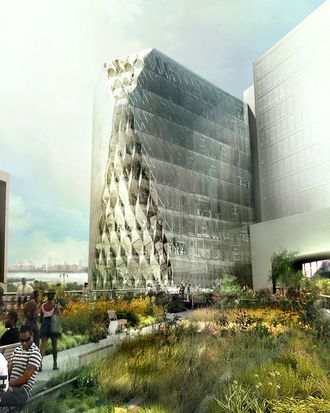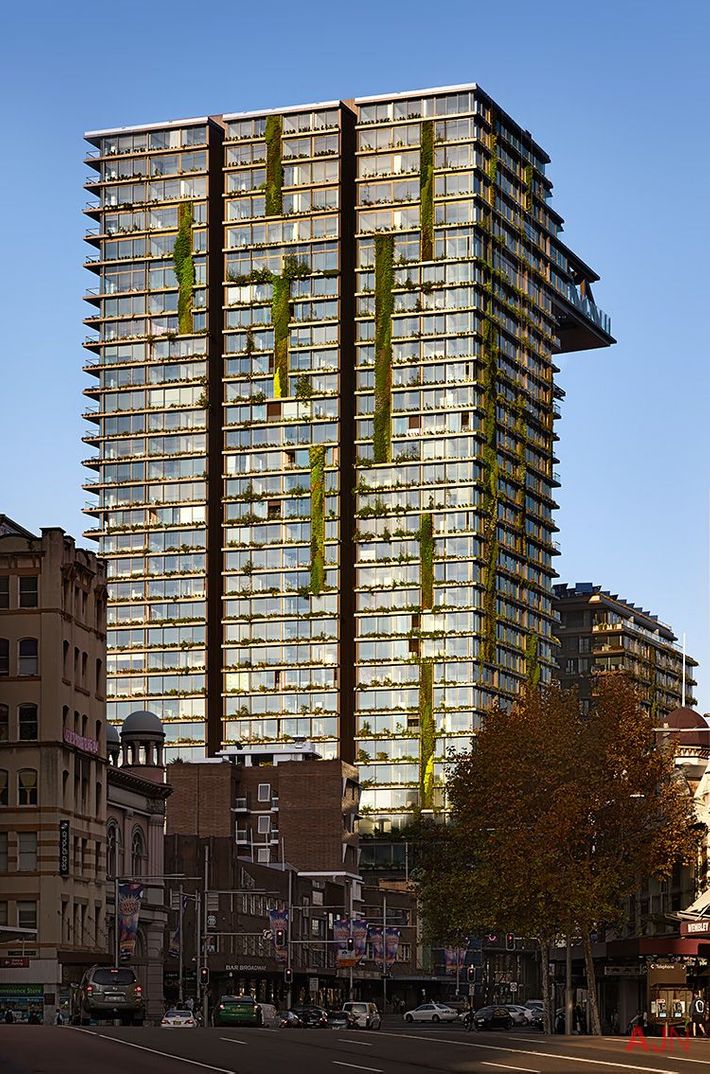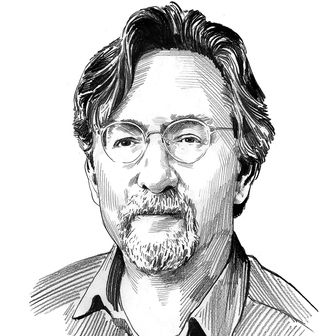
A weeklong series of ideas for improving urban life.
Whenever a new tower starts muscling its way toward the sky, it drains a bit more light from the streets and parks below, so walking along a sidewalk can sometimes feel like pacing the bottom of a deep well. But what if, even in the densest thickets of Manhattan, skyscrapers could be designed to shrink, or even bleach out, the shadows they cast? Imagine a structure that bends like a rubbery dancer to dodge as many rays as possible and let them fall on a park instead. That’s what Jeanne Gang’s Solar Carve tower will do for the High Line. Or think of a high-rise fitted out with angled mirrors that make its shadow glow. Jean Nouvel’s One Central Park in Sydney, Australia, does that. New Yorkers who fear that a 1,500-foot-high wall of deluxe condos will one day cast Sheep Meadow in permanent shadow could start demanding designs that cast soft, glare-free pools of light instead.
Software and high-tech glass offer precise ways of managing shadows, but the idea of maximizing solar access has a long pedigree. In the 1970s, the Los Angeles–based architect Ralph Knowles observed that the Acoma people of New Mexico had always oriented their terraced pueblos to the south, ensuring that every house would get maximum exposure to the low winter sun. Knowles proposed enshrining a right to sunshine in a legal concept he called the “solar envelope.” In New York, resistance to darkened streets is already baked into law. We’re approaching the centennial of the 1916 zoning code, which obliges buildings to retreat as they rise, opening up cones of sunshine that touch the ground. The pursuit of light created the classic New York skyscraper.

Now that venerable citywide principle could be tailored to specific sites. For example, the law is geared toward lighting up wide avenues, leaving mid-block areas dark. That turned out to be a problem at the High Line, which wends its way beneath Tenth and Eleventh avenues and runs a gauntlet of new condos. “It’s a unique situation: If you follow the zoning, you throw the High Line into shadow,” says Jeanne Gang. So she designed a building that violated the rules, then persuaded the city to change them. Her Solar Carve tower will step back from the park instead of toward it, and its lower section will be scooped away to let light pass unmolested on its way to the greenery. “The more you carve it, the more sun you get,” Gang says.
The tech-oriented design firm NBBJ hopes to do Gang one better by actually moving sunlight where it’s needed: to the street. Design director Christian Coop says that while skyscrapers are often judged by their super-tall silhouettes, it’s the effect they have at human scale that matters most. “Whether a building is a success depends on what it gives back to the public realm,” Coop says. “So the question is: Can we shape a whole building in order to improve ground floor conditions?”
NBBJ developed a program to analyze the sun’s trajectory and use it to sculpt a form ideally suited to minimizing shadows. The initial result was a tower that nobody would want to build, or even spend much time in. So the architects began tweaking the design, sifting through options, and reconciling science with livability. They came up with an asymmetrical pair of Pringle-shaped skyscrapers, with an open oval between them. The taller building’s glass wall would catch the sunshine streaming over the shorter one and bounce it down into the plaza. Coop says that the reflections would reduce shadows by half, and also create shifting pockets of light — ideal spots for movable café chairs. It’s crucial to avoid focusing beams and getting the kind of intense glare that can fry an egg on the sidewalk. NBBJ calls the concept No-Shadow Tower, though it would be more accurate to call it the Smaller-Shadow-From-One-of-Two-Towers, since it depends on a pair of buildings separated by an open space. For that reason, the technique is an awkward fit for New York, but it might have been used at the Time Warner Center, the World Trade Center, or Hudson Yards — anywhere new tall buildings huddle around a public plaza.
What all of these designs share is a wedge form that widens as it rises, letting the sun touch the tower’s base and projecting shadows farther away. Even Gang’s carefully curated shadows don’t disappear — they just get moved over to the West Side Highway. The trouble is, the farther shadows fall, the less responsible developers (and architects) feel for their effects. We can’t treat darkness the way the city deals with garbage: Move it somewhere else. So a more promising inspiration might be Nouvel’s new building in Sydney, where a canopy of motorized mirrors suspended near the roofline shoots reflected rays down below. Perhaps the next billionaire’s needle could incorporate its own auto-aimed reflector, lighting up a Central Park playground instead of throwing it into gloom.































